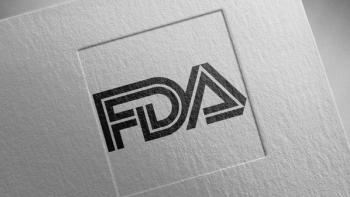
Breath Analysis May Allow No-Needle Glucose Monitoring
ORANGE, Calif. -- The goal of noninvasive glucose monitoring for children with type 1 diabetes has gained momentum from early results with an experimental breath test, researchers here found.
ORANGE, Calif., Sept. 24 -- The goal of noninvasive glucose monitoring for children with type 1 diabetes has gained momentum from early results with an experimental breath test, researchers here found.
Exhaled methyl nitrate levels measured with air-pollution testing techniques in the laboratory paralleled plasma glucose in a small study of type 1children, reported investigators online in the Proceedings of the National Academy of Sciences.
Methyl nitrate levels were significantly elevated during hyperglycemia and fell as normal glucose levels were restored (P=0.01), wrote Pietro R. Galassetti, M.D., Ph.D., of the University of California at Irvine here, and colleagues. The levels remained steady during periods of normal glucose levels (P=0.32).
"Attempts to develop alternative, noninvasive monitoring methods have been pursued for decades and, if successfully developed, are likely to have an immense global impact on diabetes screening, diagnosis, monitoring, and prevention," the researchers said.
Their findings suggest breath analysis has potential, although the low, parts-per-trillion concentrations of exhaled methyl nitrate found in the study may present a challenge for developing point-of-care testing, they said.
The researchers analyzed exhaled gas profiles and plasma glucose levels of 10 children with type 1 diabetes. Of a total of 18 experiments; five were done over periods of sustained euglycemia and 13 while hyperglycemia (160 to 410 mg/dL) was gradually corrected by intravenous insulin infusion.
Air samples were analyzed in a laboratory with gas chromatography techniques used for air pollution testing, including electron capture, flame ionization, and mass selective detection.
Among the more than 100 gases detected in the children's breath, methyl nitrate was most closely correlated with blood glucose levels.
Methyl nitrate profiles closely paralleled plasma glucose in 16 of the 18 experiments, although absolute concentrations differed between patients and on repeat measurement.
During euglycemia, methyl nitrate concentrations stayed relatively steady (average 11 ppt initially and 8 ppt after two hours, P=0.32) as did room air concentrations of methyl nitrate.
In patients who presented for testing in the morning with spontaneous (not postprandial) hyperglycemia, initial methyl nitrate concentrations averaged 27 ppt and decreased to 15 ppt after insulin infusion to restore euglycemia (P=0.01). Thereafter, exhaled methyl nitrate levels did not change significantly compared with the euglycemic group (average change -3.7 ppt versus -3.1 ppt, P=0.080).
The interaction between methyl nitrate concentrations and glucose over time was significant for all terms of interaction (P=0.003 to P=0.001), especially when the researchers correlated glucose with methyl nitrate after a 30-min lag time (P
"There are many points that can make this a very practical and very accepted way to test glucose," he said.
"We now use very sophisticated equipment that is not reproducible in the doctor's office," he added, and further study is needed to develop a "cost-effective, less bulky, less complicated" device.
"Conceivably, yes, we will have doctor's office and, hopefully, even patient handheld devices that can be kept at home," Dr. Galassetti concluded, "but this is, of course, down the road."
Newsletter
Enhance your clinical practice with the Patient Care newsletter, offering the latest evidence-based guidelines, diagnostic insights, and treatment strategies for primary care physicians.
















































































































































































































































































